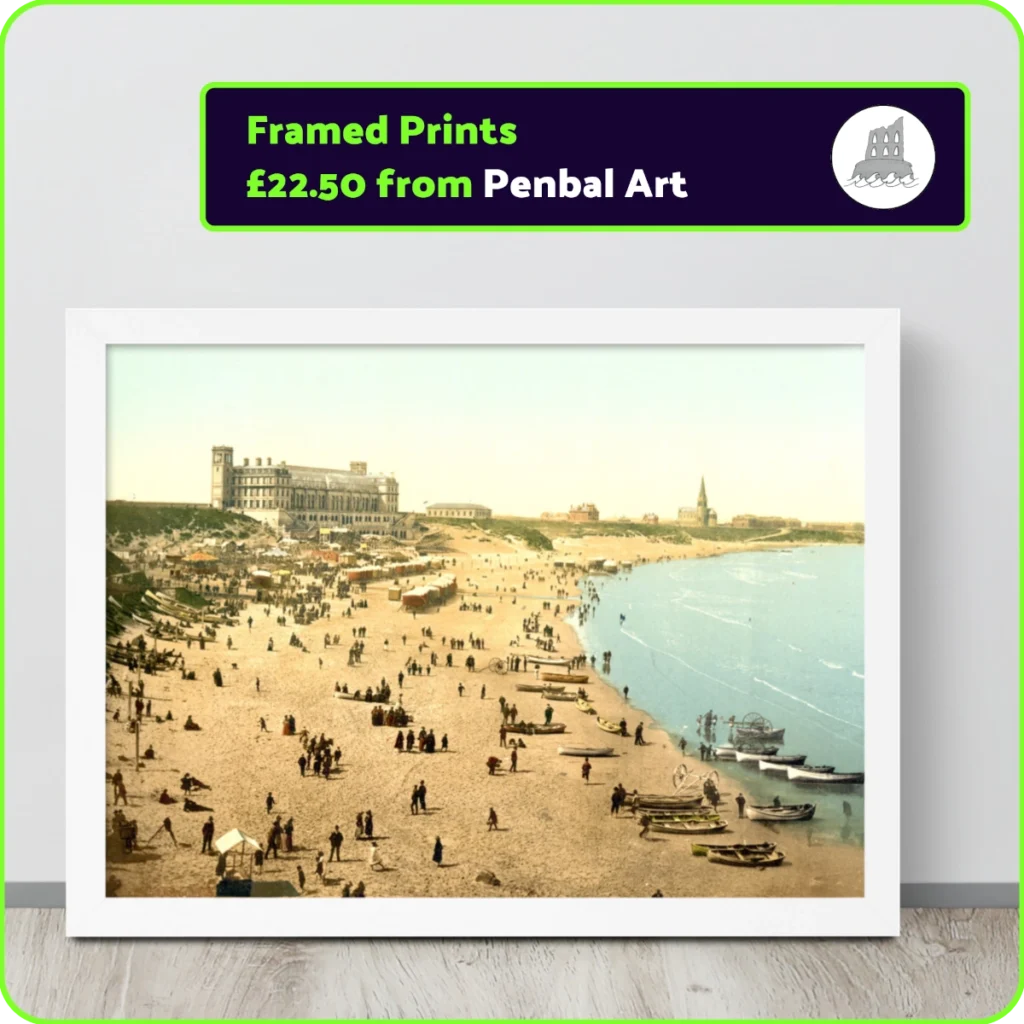Tynemouth’s Bronze Statue of Queen Victoria Has a Twin in India
Almost every large town and city in the Commonwealth has a Queen Victoria statue. These started to be produced towards around her diamond jubilee, and after her death in 1901 there was a competitive drive around the Empire to have more made.
It’s fair to say Tynemouth’s Victoria has seen better days, with the Boer War monument at the other end of the park, erected at the same time, also in a state of degredation.
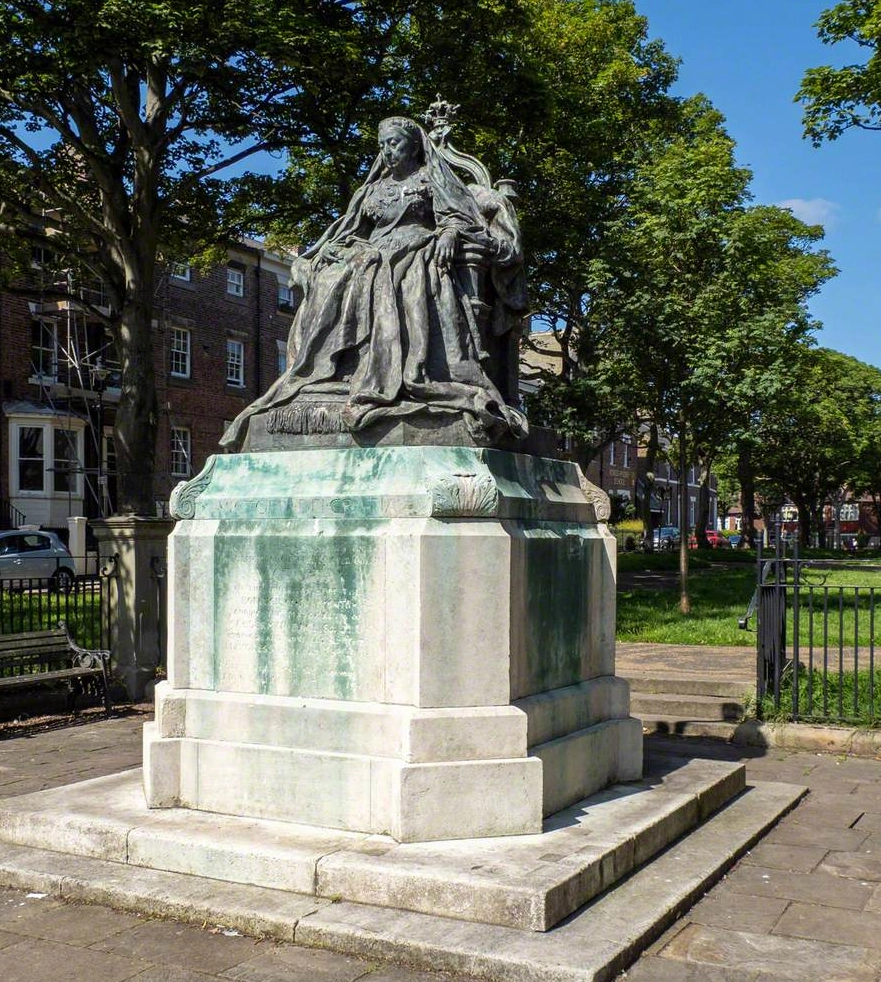
Photo credit: Susan Dawson
The Tynemouth statue was designed by Alfred Turner (1874-1940). In 1902 the residents of Tynemouth collected £1000 to have her made and much money was saved by taking the second cast from the mould for the statue destined for Delhi. Today, the original work sits unassumingly gathering dust in a corner of the Delhi College of Art.
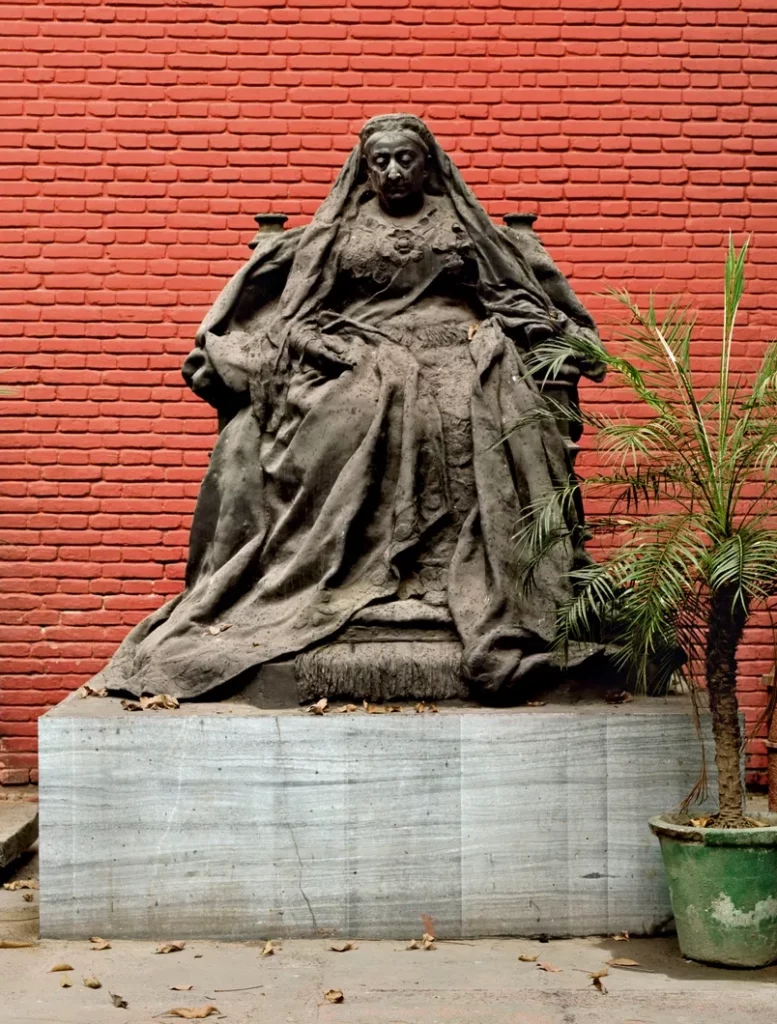
The Turner statue shares parallels with the Newcastle upon Tyne Queen Victoria, designed by Alfred Gilbert (1854-1934), which sits outside St Nicholas’ Cathedral.
In Tynemouth, the sturdy portland stone plinth became discoloured by the bronze soon after its installation, to the consternation of everyone. It is inscribed with the words:
VICTORIA.DEI.GRATIA
BRITANNIARUMREGINA
INDIAEIMPERATRIX
Above, etched in the bronze, is the name of the London foundry: A. PARLANTI.
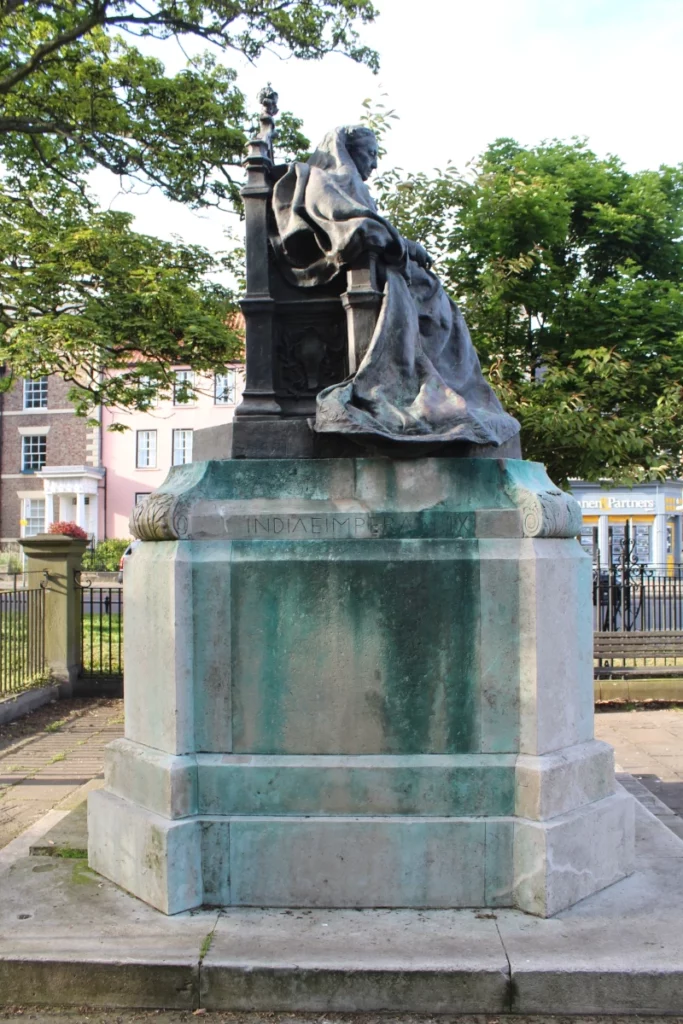
The problem is, however, it’s very hard to find a picture of the Tynemouith Queen Victoria as she was meant to look, as several parts of the statue were stolen early in her existence:.
The missing pieces:
- Crown
- Sceptre
- Two figurines beside each shoulder
- A wreath behind her head attached to the throne
The figurines represented justice and peace — the peace statuette on her left side depiciting a mother and child (a motif of Turner) was in situ in the early 2000s. On the Indian version these disappeared in 1905. The Indian version is also missing the head rest of her throne.
The only complete picture I can find is this postcard from around 1910:
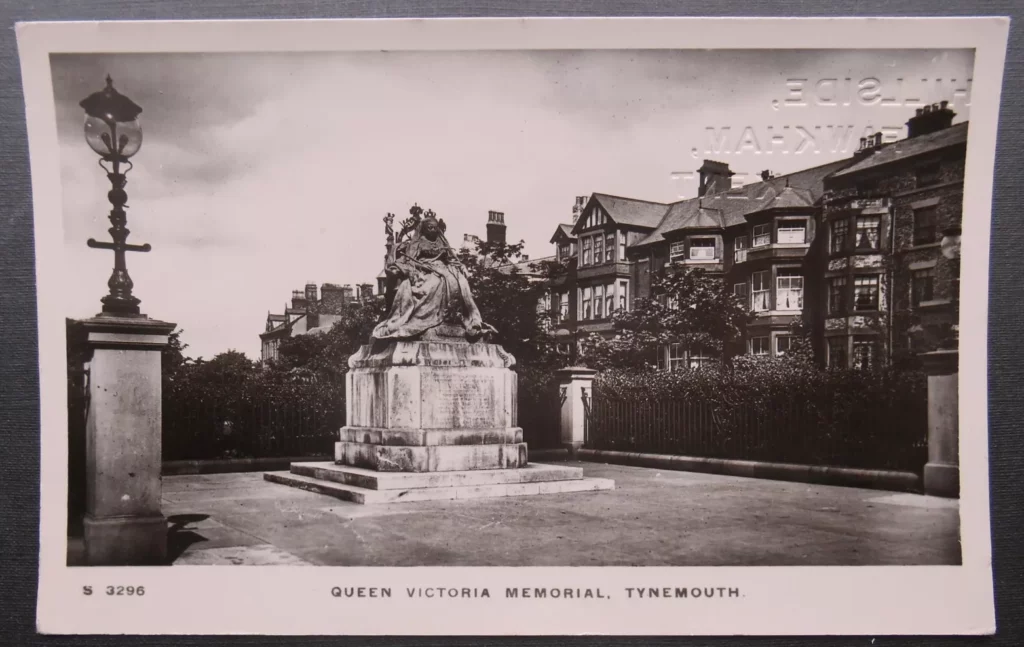
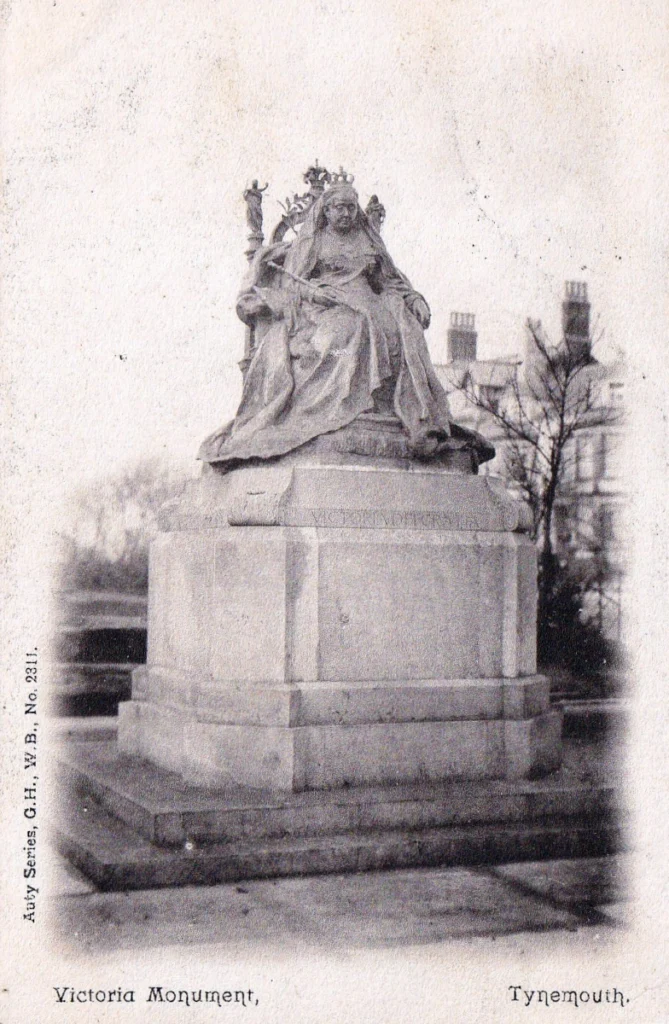
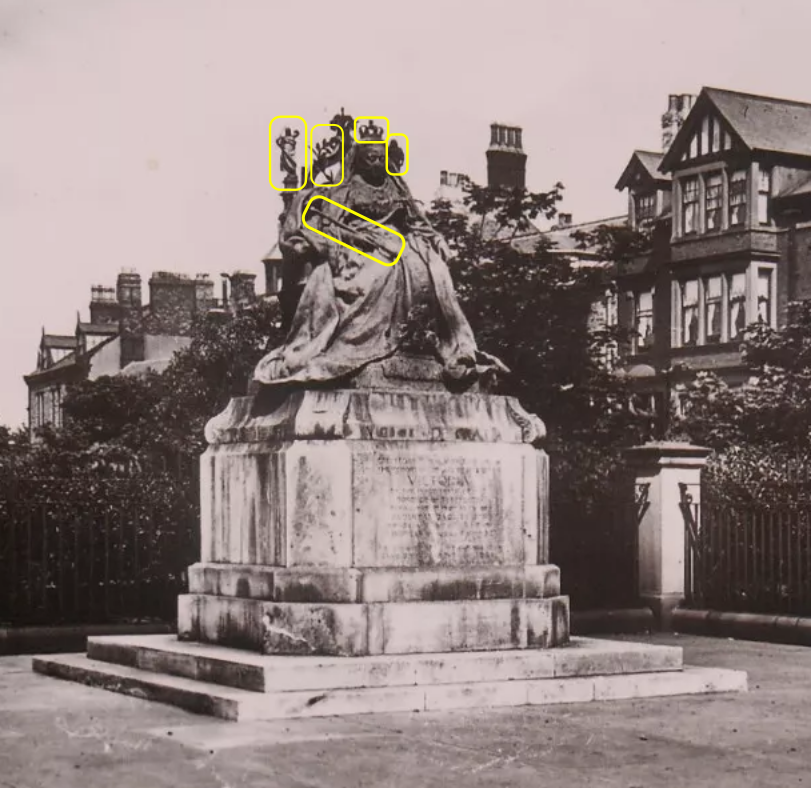
So if Victoria is to be reinstated to her original glory, then fibreglass versions of these items will need to be made from scratch with very little to go on, as the records of Alessandro Parlanti (1862-1921) for this period are missing.
But in this day and age, it can be, and it should be done, because the village has to take pride in these small things. They mean a lot to everyone that cares about heritage.
Never miss an article. Enter your email or give our FB page a like



